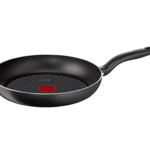Following an ovo-vegetarian diet, which includes eggs and plant-based foods while excluding meat and dairy, can be a rewarding and healthy choice. However, ensuring a well-rounded and satisfying ovo-vegetarian meal plan and navigating dining out options can sometimes pose a challenge. But worry not! In this article, we will provide you with valuable tips and tricks for effective meal planning and enjoying dining out experiences while adhering to an ovo-vegetarian lifestyle.
- Embrace Meal Planning:
a. Take Stock of Your Pantry: Before creating a meal plan, assess the ingredients you already have. This will help you save money and reduce food waste.
b. Plan Balanced Meals: Ensure your meal plan includes a variety of fruits, vegetables, whole grains, legumes, and eggs. Experiment with different cooking methods and flavours to keep your meals exciting.
c. Prep Ahead: Spend some time each week washing, chopping, and prepping ingredients to streamline your cooking process. This can save time and make mealtime more convenient, especially on busy days.
d. Batch Cooking: Cook larger portions and freeze leftovers in individual servings. This way, you’ll always have a ready-made meal for those days when you don’t feel like cooking.
- Optimise Nutritional Needs:
a. Protein Power: As an ovo-vegetarian, eggs are an excellent source of protein. Incorporate them into your meal plan regularly, and consider including other protein-rich foods such as legumes, tofu, tempeh, and seitan.
b. Omega-3 Fatty Acids: While fish is a primary source of omega-3s, you can obtain these essential fatty acids from flaxseeds, chia seeds, walnuts, and algae-based supplements. Ensure these sources are part of your regular diet.
c. Iron-Rich Foods: Boost your iron intake with leafy greens like spinach, kale, and collard greens, as well as fortified cereals, whole grains, and dried fruits. Pairing these foods with vitamin C-rich sources like citrus fruits or bell peppers can enhance iron absorption.
d. Calcium Sources: Dairy products may be off-limits, but calcium-rich alternatives like fortified plant-based milks, calcium-set tofu, tahini, and leafy greens can provide the necessary calcium intake. Consider supplements if needed.
- Navigating Dining Out:
a. Research and Plan: Prior to dining out, check menus online to find vegetarian or vegan-friendly options. Many restaurants now offer plant-based alternatives, so select those establishments that cater to your dietary preferences.
b. Communicate Your Needs: When ordering, politely inform the server about your ovo-vegetarian diet. They can guide you regarding ingredients or suggest modifications to accommodate your preferences.
c. Be Adventurous: Explore various cuisines that traditionally include vegetarian dishes, such as Indian, Middle Eastern, or Mediterranean. These cuisines often feature flavourful and creative plant-based options.
d. Build Your Own: If the menu lacks suitable vegetarian options, don’t hesitate to create your own meal by combining side dishes or requesting ingredient substitutions. Most chefs are accommodating and willing to help.
Maintaining an ovo-vegetarian lifestyle can be enjoyable and effortless with the right approach to meal planning and dining out. By embracing meal planning, optimising your nutritional needs, and navigating dining establishments with confidence, you can savour delicious, balanced meals while staying true to your dietary choices. Remember, a well-planned ovo-vegetarian diet can provide all the nutrients your body needs for a healthy and fulfilling lifestyle.








